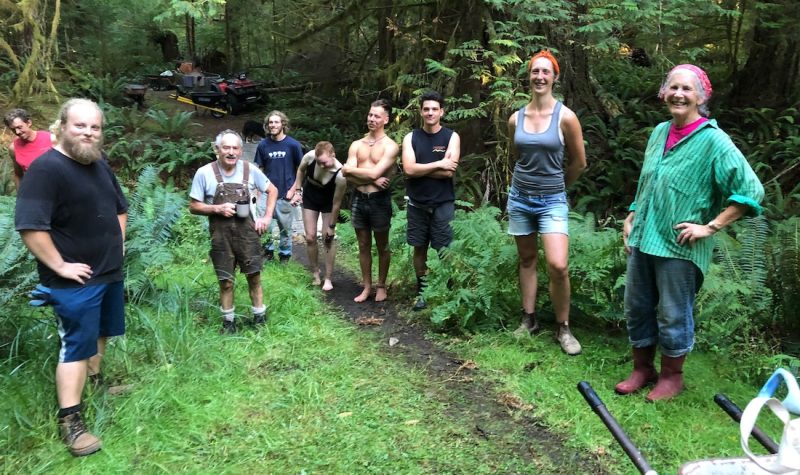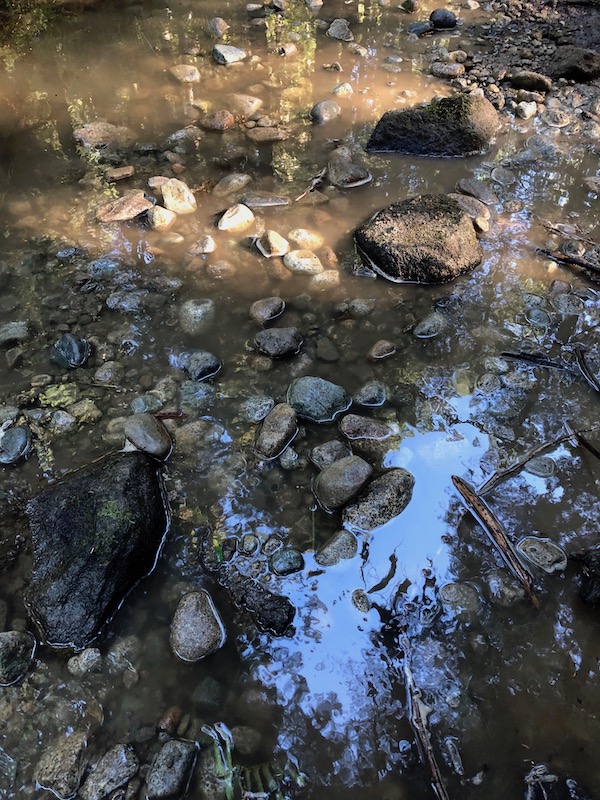By Max Thaysen
The Friends of Cortes Island (also known as FOCI) Streamkeepers are increasing the salmon spawning potential of James Creek, on Cortes Island, British Columbia
Work Begins
Last weekend saw the first of many days of work moving gravel from the bridge over James Creek, down the Grandmother grove trail to five different locations in the creek bed.
The spawning locations receiving gravel were chosen by FOCI Streamkeeper Captains Cec and Christine Robinson with guidance from Department of Fisheries and Oceans (DFO) Community Advisor Stacey Larson and Dave Ewert, a retired hatchery manager now living on Cortes.

FOCI volunteers - courtesy Max Thaysen
The gravel was donated and delivered by Mainroad, Cortes’ road maintenance contractor. The mix used was a custom recipe ordered by DFO biologist Sean Wong, left over from the Basil Creek and Whaletown Creek culvert fish passage. Cec and Christine wish to thank Johnny Messent and Bruce Brown, the local contacts from Mainroad.
On Saturday, Sept. 5, teams gathered in roughly equal numbers from East and West of the bridge over James, a water-body that separates Whaletown from Centered Cortes. The two communities have a history of peaceful relations, and the project to improve spawning grounds only strengthened their bonds.
Buckets were filled by hand, loaded in to wheelbarrows and brought to a loading station approximately 600 metres down the trail. At the loading station, buckets were transferred to make half-full buckets, hoisted on to a tram that ran on a cable down the last 60 metres to the creek bed. There, Cec and Christine directed the spreading of gravel to where the salmon would make their spawning beds, called redds.

All photos courtesy Max Thaysen
Mosaic Forestry company, which owns the land that James creek runs through, provided a permit for the work to be done. Stacey Larson achieved a permit from DFO for in-stream work – the permit being limited to the time when salmon are unlikely to be in the stream, Sept.1-15.
An ideal salmon spawning stream
According to Cec and Christine, James creek has all the ideal features of a salmon stream – clear cold water that flows year-round, shade, large woody debris and bugs. But, as with so many streams, it lacks gravel because it was used as a log chute some time in the past.

All photos courtesy Max Thaysen
Chum make the bulk of salmon species who use James Creek. Cec and Christine say that Chum may be a species with the best chance of surviving climate change because they don’t spend much time in the creek the way other species do – they hatch in the spring and are out to sea shortly thereafter. That fact, and the way they use their big powerful bodies to loosen the gravel, make Chum the preferred species for hatchery release and other forms of salmon enhancement on Cortes.
The work will continue next weekend to complete the first of five sites set to receive gravel.
Editor's note on full disclosure: Max Thaysen is the President of FOCI



